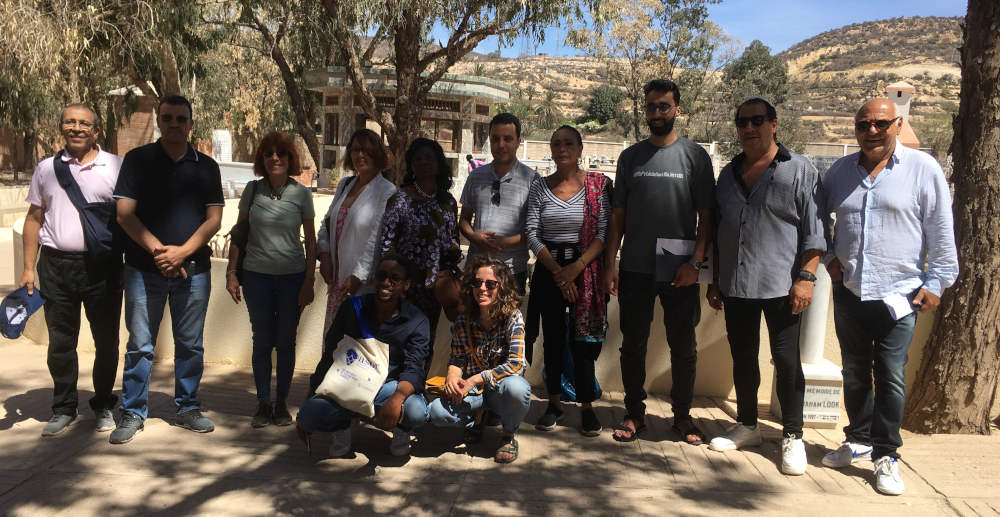

CHI UPDATE: Conversations among People of Christian, Jewish, and Muslim Faiths in Agadir, Morocco
By Marie-Line Naves | ASOR implementer, Morocco with the collaboration of Farid Aghla and Lahcen Ichou | ASOR implementers, Morocco
By invitation from ASOR, members of the Jewish community of Casablanca, the Protestant community of Agadir, and the Muslim community of the province of Taroudant gathered in a hotel meeting room on a hot day on September 8, to engage in two days of conversations and fellowship around their shared cultural heritage. This was a heteroclite group, to say the least, composed of individuals from diverse cultural and religious backgrounds. Some like Andy Vaughn, ASOR’s Executive Director, came all the way from the United States, while I flew in from France. We were all in this room to talk about cemeteries, rituals, beliefs, in short, about what deeply shaped us. So, there we were, talking about our faith and cultures, trying to create bridges and hopefully bonds to break the rigid frames our nationalities, religious, or ethnic backgrounds boxed us in. For many others and me, this was a deeply emotional moment.
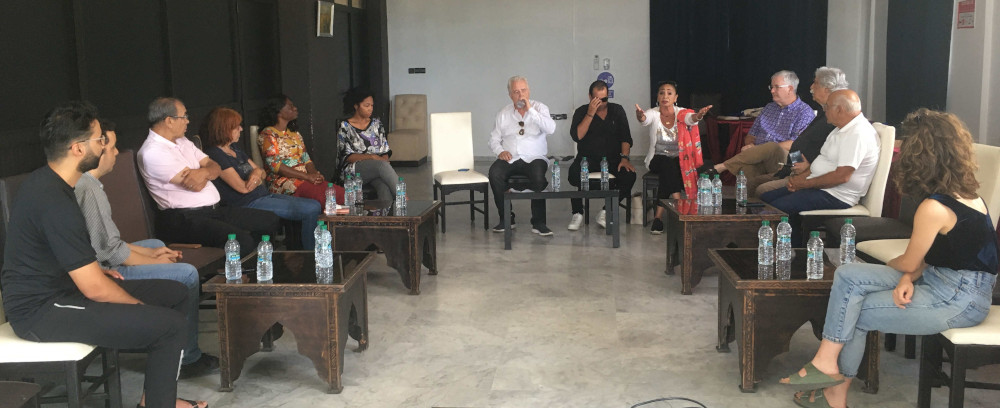
Cultural exchange meeting between the three communities: Jews, Christians and Muslims in Agadir.
Between those eager to share or to explain and those listening, the room seemed alive with strong personalities and lively exchanges. Conversations flew spontaneously in a mix of English, French, and Arabic and it was beautiful to participate in this multicultural moment. “I learned that language will never be a barrier. We can always find ways to communicate,” said Lahcen Ichou, ASOR implementer and co-organizer of this event, when we sat down to debrief at the end of the day.
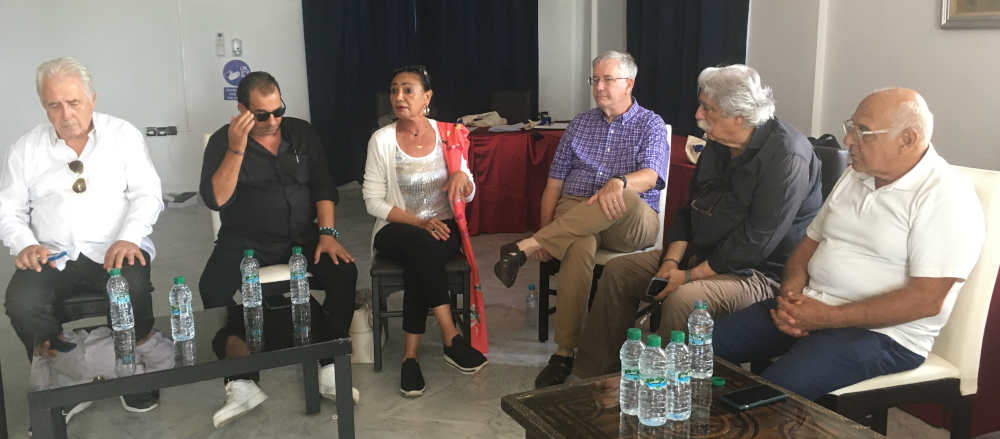
Discussions on issues related to religious heritage in the presence of Andy Vaughn, Executive Director of ASOR.
After talking and having trained the group on software to document heritage, the group moved to the synagogue of Agadir where the Jewish community welcomed us warmly and led us into the temple. This was the highlight of the day for Farid Aghla (ASOR implementer and co-organizer of this event), Lahcen, and me. Indeed, it was the first time for the three of us that we were in a synagogue together with Jewish people. The Jewish community introduced us to their sacred place and offered explanations on architecture, art, and rituals that we had not heard before. Lahcen proposed that we all pray together. That’s how we found ourselves in this synagogue, Christians, Muslims, and Jewish people, listening to the rabbi’s sermon and prayers in Hebrew. I had goosebumps and I am sure I wasn’t the only one who felt this synergically connection. It was a unique moment in my life, and I could feel that something special was indeed happening. Indeed, Frédérique, a member of the Protestant community, shared with me later that this moment was very precious to her. She was praying with Jews for the first time in her life, and this meant a lot to her.
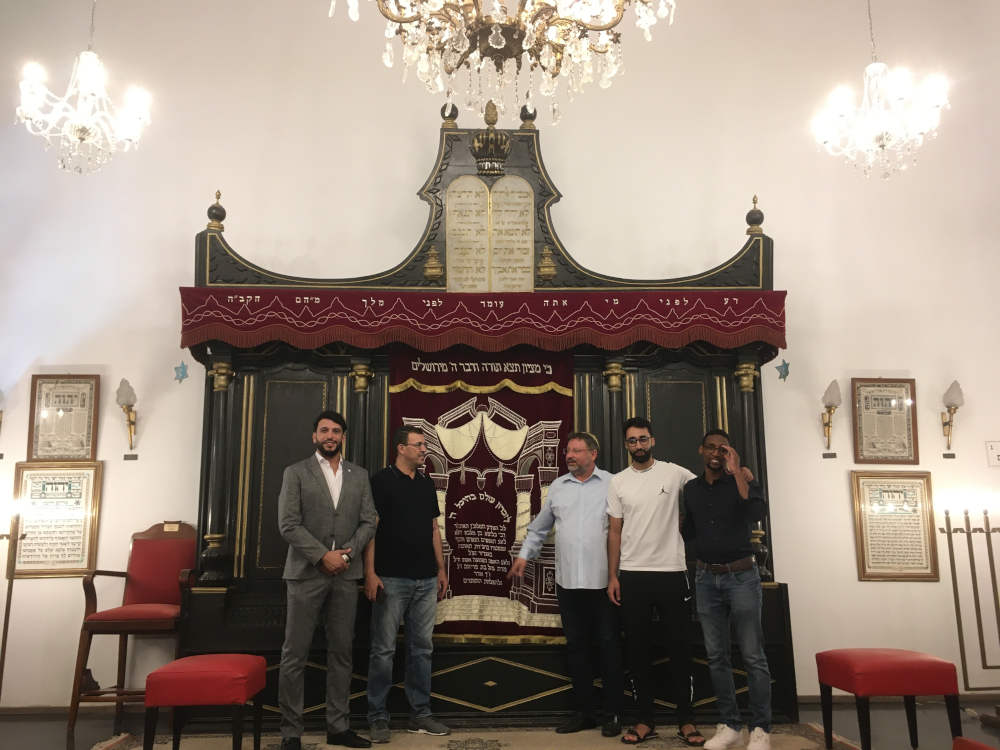
The representatives of the Jewish, Christian and Muslim communities at the Jewish synagogue of Agadir.
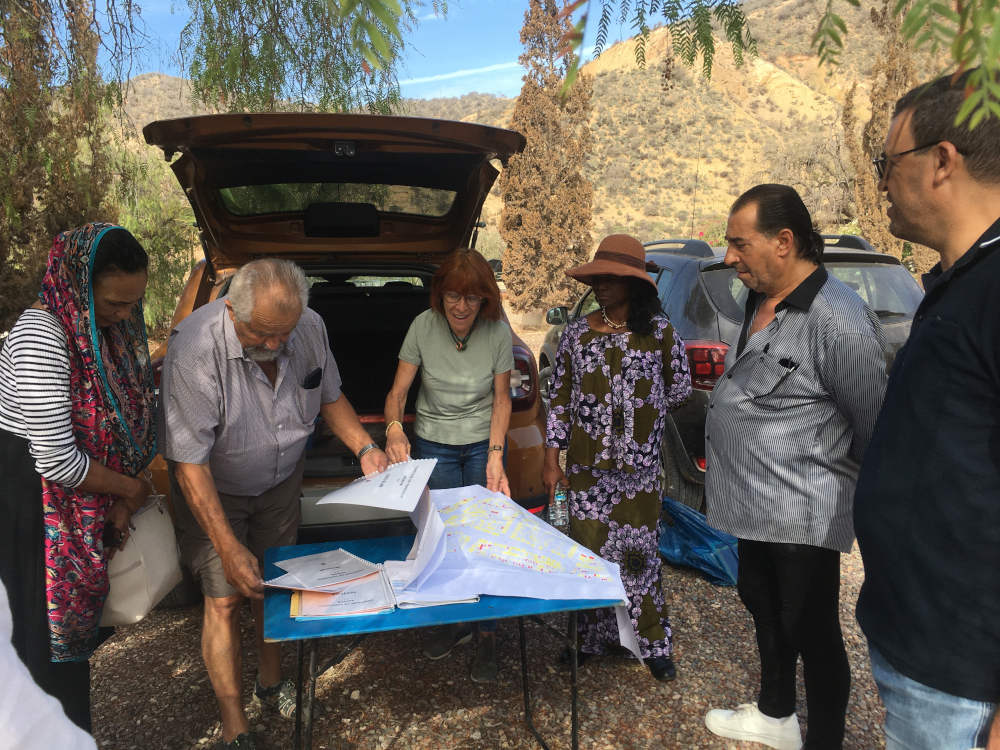
Presentation of Christian funerary heritage at the Agadir cemetery by members of the Christian association in Agadir. The Christian priest showing the handwritten documentation he compiled on the Christian cemetery of Agadir.
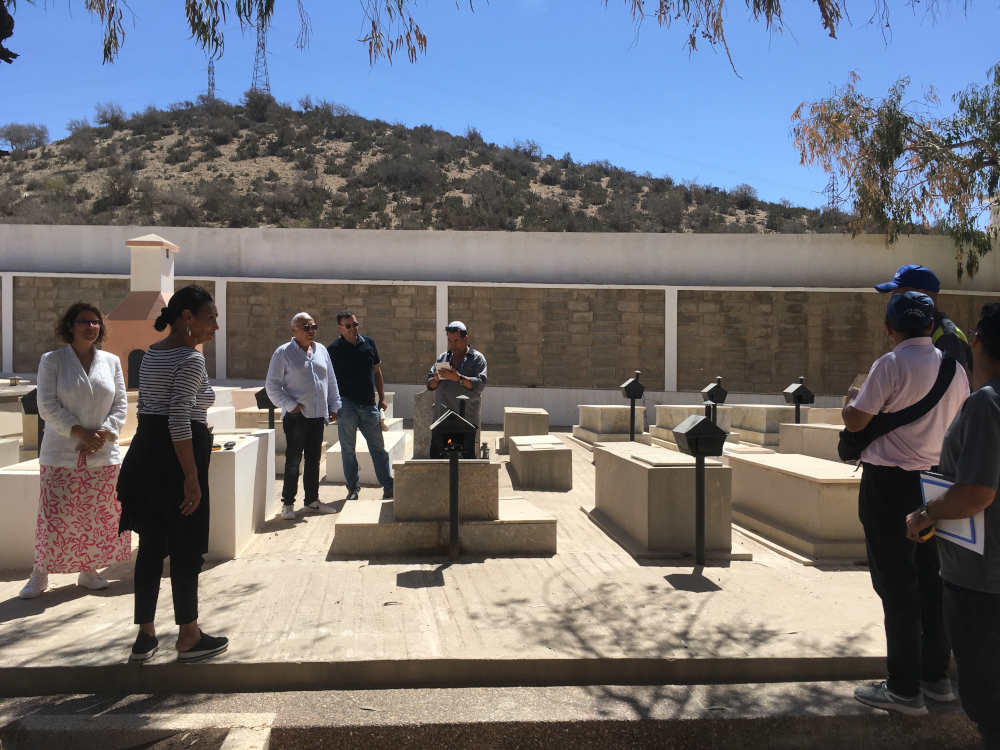
Presentation of the Jewish cemetery of Agadir by the Jewish communities of Agadir and Casablanca.
After prayer, the Jewish community of Agadir hosted at the synagogue a dinner for the entire group. Sharing a meal is always the moment when you knit bonds and establish enduring fellowship. Farid said that he heard lots of stories from his grandfather of the time when the Jews were still living in Arazane, a village located in the province of Taroudant. He revealed that “sitting at this table, eating the same food as the Moroccan Jews was like being part of the many stories my grandfather used to tell me.” He added that he will share with his community in Arazane the fellowship he experienced this evening.
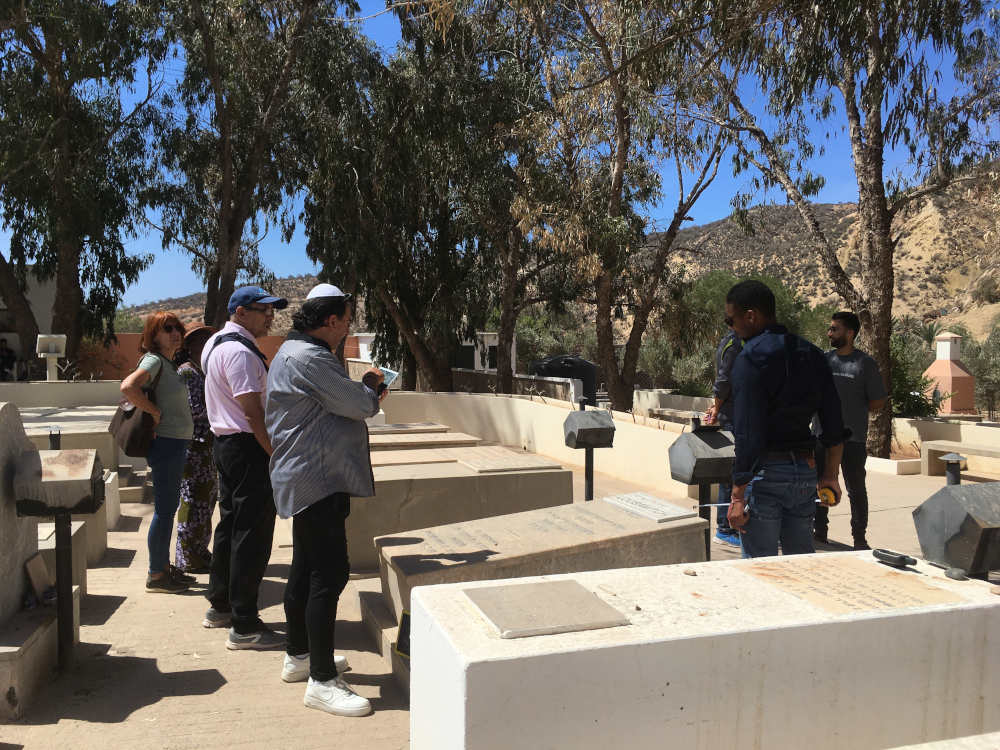
Documentation using KoboToolBox of the Jewish cemetery of Agadir by the participants.
The following day was a field day when both communities would document together tombs of Agadir residents whose families lived in the city before they moved out of the country. The group headed first to the Christian cemetery where Frédérique and the priest had arranged for us to meet Marc, who dedicated years of his life to care for the cemetery and to document it. We were impressed with his handwritten documentation but showed him how he could now feed his data to a program (KoboToolbox) and make it available to a wider audience. There also, it was once again an opportunity to talk about funerary rituals used in different religions. We then moved to the Jewish cemetery where the group documented tombs, some of which housed children and parents buried collectively after the 1960 earthquake. A project to document the entire Protestant and Jewish cemeteries of Agadir was consequently put in place by civil society members eager to affirm ancestral collective ties through this community-led effort.
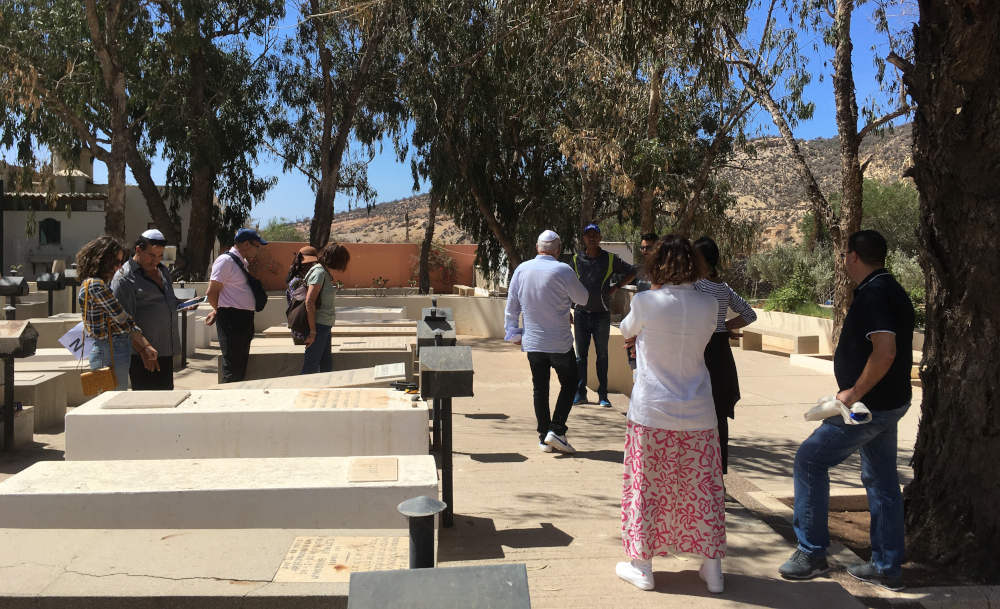
Exchange and debate on the inventory of Jewish heritage in Agadir.
These two days have certainly marked me. As a volunteer who has worked in a few countries on community projects, this was the first time that an event has brought together ordinary members of communities to discuss their shared heritage. This was an occasion to talk, bond together, and see each other as humans entrusted with a cultural heritage legacy to document, preserve, and care for future generations.
